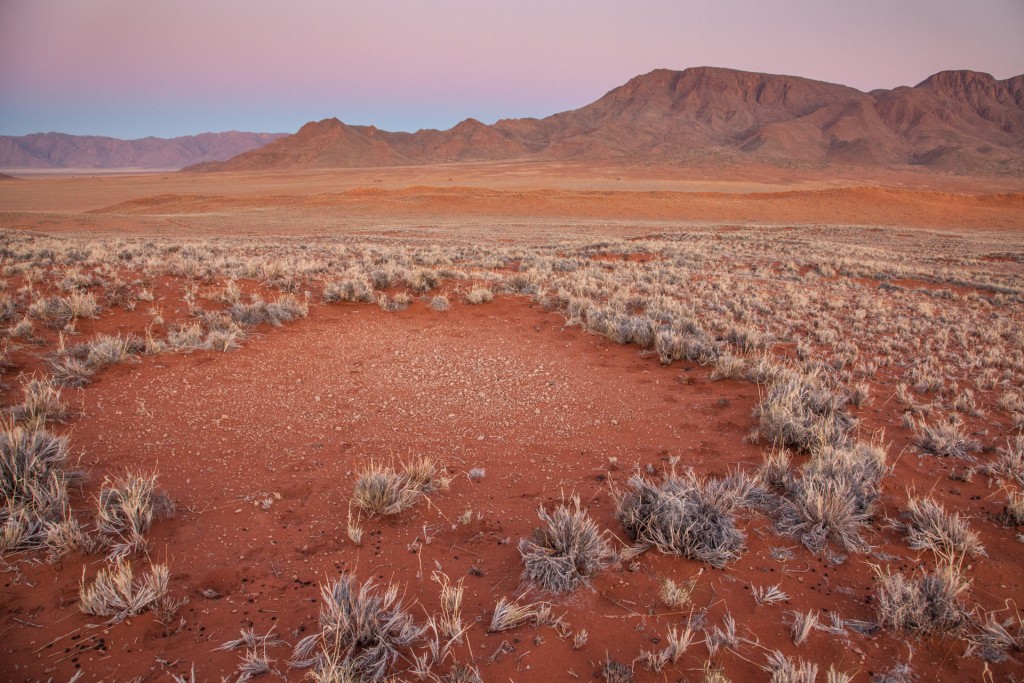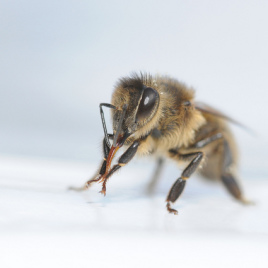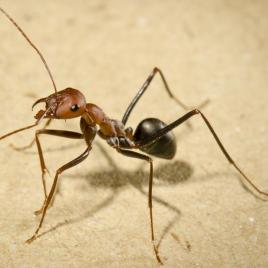
The enigmatic “fairy circles” of the Namib Desert appear in complex spatially organized patterns.
(Image by Jen Guyton)
Self-organization of plants or fungi into distinct geometric patterns, such as “fairy circles”, has been fascinating to scientists. One such example in the Namib Desert consists of patches of bare sand from one to 25 meters in diameter, surrounded by desert shrubs and tall grasses. The mechanism behind its pattern has been disputed for a long time, and two major theories have emerged. The first theory attributes the circles to competition between distant relatives among plant species and collaboration with nearby plants. The second credits underground insects for such regular patterns. New research reveals that the answer is a little bit from column A, a little bit from column B – and encourages scientists to look at integration of self-organizing mechanisms in natural settings.
Authors:
Corina E. Tarnita, Juan A. Bonachela, Efrat Sheffer, Jennifer A. Guyton, Tyler C. Coverdale, Ryan A. Long & Robert M. Pringle
Corresponding author:
Corina Tarnita, Princeton University, Princeton, New Jersey, Email: ctarnita@princeton.edu, Tel: +1 609 258 3896
Original paper published in Nature on January 18, 2017.


